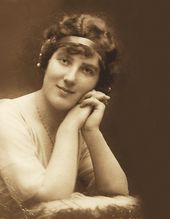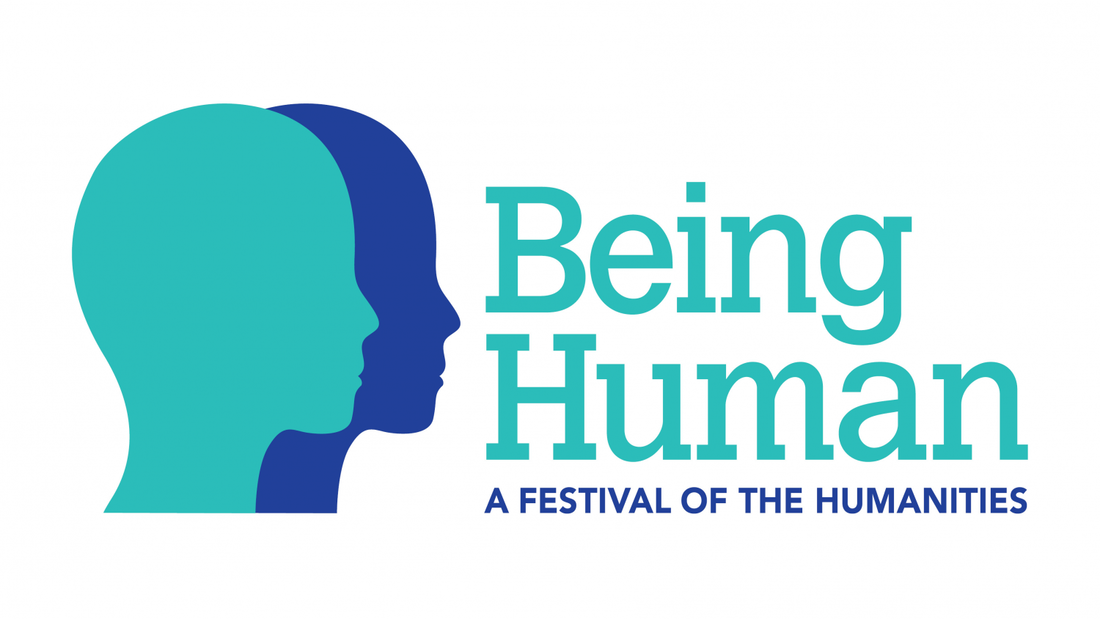FENELLA PATON (1901-1949)

Fenella Paton was an Aberdeen philanthropist and pioneer of women’s rights and birth control in the North-East.
Mary Fenella Crombie was born in London on 29 January 1901 into a well-known North-East family, the Crombies of Cothal Mill (J.J. Crombie Limited, woollen manufacturers). Her father, John William Crombie (1859-1908), sat as Liberal MP for Kincardineshire 1892-1908 and was considered to be a Gladstonian Radical. He held minor office as Private Secretary to James Bryce, Chancellor of the Duchy of Lancaster then President of the Board of Trade between 1892 and 1895. Her mother was Minna Wason (d 1951) the daughter of Eugene Wason, Liberal MP for Clackmannanshire and Kinross. Her upbringing was, therefore, in a highly political and very liberal milieu. She had one brother, John Eugene Crombie (b 1896) who was killed in action on 23 April 1917.
Fenella Crombie married John David Paton of Grandhome, at St George’s, Hanover Square in 1923. John Paton, (1890-1982) the eighth laird of Grandhome, was a Donside neighbour of Crombies. He was the son of William Roger Paton of Grandhome, the author and translator, and noted Hellenophile, and his Greek wife, Irene Olympitis. Following their marriage, Fenella and John resided at Grandhome House, an impressive seventeenth century laird’s house on the banks of the River Don to the north west of Aberdeen. The Patons were a cosmopolitan, internationalist and liberal family (John’s sister, Augusta, was married to Baron János Kemény, the Hungarian theatre director and dramatist).
Fenella was described as a well-born radical who had all the advantages that birth, good breeding and a fine education could convey. She was a scarcely conventional ‘Aberdeenshire Laird’s wife’ and combined running Grandhome House with six children and extraordinarily busy engagement with many social causes of the age. She took a particular interest in the St Katherine’s Community Centre which helped girls from working class backgrounds by organising social and educational activities, and she served as its president for twelve years. Her friend, Mrs Irvine of Straloch, believed this organisation was the one closest to her heart.
However, in is the health sphere that Fenella Paton’s most significant contribution and legacy lies. She founded the District Nursing Association for the parish of Old Machar, was a director of both the Maternity Hospital, and of Aberdeen Royal Infirmary. In 1926, she opened the first birth control clinic in Aberdeen. The Aberdeen Women’s Welfare Centre was located at 4 Gerrard Street; it was run and financed by Fenella with her mother (Mrs Crombie of Balgownie Lodge) together with a group of similarly liberal and sympathetic friends. Fenella was inspired by the work of Dr Marie Stopes and although the Aberdeen Centre was independent of Dr Stopes’s organisation, the two corresponded and became friends. Marie Stopes visited and would stay with Fenella and John Paton at Grandhome.
The Centre was staffed by a family doctor, Dr Florence Malcolm, and by a nurse, Mrs Rae. The running costs were entirely met by Paton, her mother and supporters until 1935 when the City Council started a partial contribution. However, it remained largely dependent on Fenella’s generosity until it 1948 when it became integrated into the newly-established National Health Service.
Fenella Paton was liberal in both politics and outlook. She served as President of the Women’s Liberal Association of Central Aberdeenshire and subscribed to many diverse causes including the building of Aberdeen Crematorium. She was associated closely with Kurt Hahn’s school at Gordonstoun and served as one of the founding Governors. In this capacity, and because of her husband’s half Greek ancestry, she arranged for Modern Greek lessons to be given to Prince Philip of Greece (later the Duke of Edinburgh). She was an indefatigable letter-writer both to her wide circle of friends and to the press, and her correspondence with various members and officers of the Eugenics Society is held in the archives of the Wellcome Trust.
Fenella and John Paton had six children, Fiona, Sheila, John Eugene, Elspeth, Rona, and David (who succeeded to the Grandhome House estate and died in 2019). Fenella Paton died on 21 October 1949 aged only 48, after a protracted illness. A tribute to by her friend and neighbour, Mrs Irvine of Straloch, was printed in the Press and Journal (22 October 1949) it stated:
It is very difficult to pay tribute in a few words to one who did so much for so many. She had great gifts of intellect and vision. She had clearness of thought, with a never-failing eagerness to learn. She had unfailing loyalty and that humour and gaiety which had something of eternal youth about it. Above all, she had great humility. This was perhaps the reason why the general public only knew a little of the work she did for the community.
Further reading
Elliott, K. ‘Fenella Paton’ in Biographical Dictionary of Scottish Women. Edinburgh: Edinburgh University Press, 2017.
Elliott, K. (2014). ‘Birth Control Clinics in Scotland 1926-39’. Journal of Scottish Historical Studies, 34(2), pp.199-217.
Entry written by Peter Reid
Mary Fenella Crombie was born in London on 29 January 1901 into a well-known North-East family, the Crombies of Cothal Mill (J.J. Crombie Limited, woollen manufacturers). Her father, John William Crombie (1859-1908), sat as Liberal MP for Kincardineshire 1892-1908 and was considered to be a Gladstonian Radical. He held minor office as Private Secretary to James Bryce, Chancellor of the Duchy of Lancaster then President of the Board of Trade between 1892 and 1895. Her mother was Minna Wason (d 1951) the daughter of Eugene Wason, Liberal MP for Clackmannanshire and Kinross. Her upbringing was, therefore, in a highly political and very liberal milieu. She had one brother, John Eugene Crombie (b 1896) who was killed in action on 23 April 1917.
Fenella Crombie married John David Paton of Grandhome, at St George’s, Hanover Square in 1923. John Paton, (1890-1982) the eighth laird of Grandhome, was a Donside neighbour of Crombies. He was the son of William Roger Paton of Grandhome, the author and translator, and noted Hellenophile, and his Greek wife, Irene Olympitis. Following their marriage, Fenella and John resided at Grandhome House, an impressive seventeenth century laird’s house on the banks of the River Don to the north west of Aberdeen. The Patons were a cosmopolitan, internationalist and liberal family (John’s sister, Augusta, was married to Baron János Kemény, the Hungarian theatre director and dramatist).
Fenella was described as a well-born radical who had all the advantages that birth, good breeding and a fine education could convey. She was a scarcely conventional ‘Aberdeenshire Laird’s wife’ and combined running Grandhome House with six children and extraordinarily busy engagement with many social causes of the age. She took a particular interest in the St Katherine’s Community Centre which helped girls from working class backgrounds by organising social and educational activities, and she served as its president for twelve years. Her friend, Mrs Irvine of Straloch, believed this organisation was the one closest to her heart.
However, in is the health sphere that Fenella Paton’s most significant contribution and legacy lies. She founded the District Nursing Association for the parish of Old Machar, was a director of both the Maternity Hospital, and of Aberdeen Royal Infirmary. In 1926, she opened the first birth control clinic in Aberdeen. The Aberdeen Women’s Welfare Centre was located at 4 Gerrard Street; it was run and financed by Fenella with her mother (Mrs Crombie of Balgownie Lodge) together with a group of similarly liberal and sympathetic friends. Fenella was inspired by the work of Dr Marie Stopes and although the Aberdeen Centre was independent of Dr Stopes’s organisation, the two corresponded and became friends. Marie Stopes visited and would stay with Fenella and John Paton at Grandhome.
The Centre was staffed by a family doctor, Dr Florence Malcolm, and by a nurse, Mrs Rae. The running costs were entirely met by Paton, her mother and supporters until 1935 when the City Council started a partial contribution. However, it remained largely dependent on Fenella’s generosity until it 1948 when it became integrated into the newly-established National Health Service.
Fenella Paton was liberal in both politics and outlook. She served as President of the Women’s Liberal Association of Central Aberdeenshire and subscribed to many diverse causes including the building of Aberdeen Crematorium. She was associated closely with Kurt Hahn’s school at Gordonstoun and served as one of the founding Governors. In this capacity, and because of her husband’s half Greek ancestry, she arranged for Modern Greek lessons to be given to Prince Philip of Greece (later the Duke of Edinburgh). She was an indefatigable letter-writer both to her wide circle of friends and to the press, and her correspondence with various members and officers of the Eugenics Society is held in the archives of the Wellcome Trust.
Fenella and John Paton had six children, Fiona, Sheila, John Eugene, Elspeth, Rona, and David (who succeeded to the Grandhome House estate and died in 2019). Fenella Paton died on 21 October 1949 aged only 48, after a protracted illness. A tribute to by her friend and neighbour, Mrs Irvine of Straloch, was printed in the Press and Journal (22 October 1949) it stated:
It is very difficult to pay tribute in a few words to one who did so much for so many. She had great gifts of intellect and vision. She had clearness of thought, with a never-failing eagerness to learn. She had unfailing loyalty and that humour and gaiety which had something of eternal youth about it. Above all, she had great humility. This was perhaps the reason why the general public only knew a little of the work she did for the community.
Further reading
Elliott, K. ‘Fenella Paton’ in Biographical Dictionary of Scottish Women. Edinburgh: Edinburgh University Press, 2017.
Elliott, K. (2014). ‘Birth Control Clinics in Scotland 1926-39’. Journal of Scottish Historical Studies, 34(2), pp.199-217.
Entry written by Peter Reid



